This month, the Portland International Airport (PDX) main terminal expansion opened to passengers. Designed by ZGF for the Port of Portland, the one-million-sf project doubles the capacity of PDX and enables the airport to welcome 35 million passengers per year by 2045.
With a nine-acre mass timber roof, the $2 billion terminal renovation-expansion is the largest mass timber project of its kind, according to a press statement from ZGF.
The new terminal aims to evoke the experience of walking through a Pacific Northwest forest. The terminal offers views of the airfield, abundant natural light, and interior landscapes that suggest the region’s natural beauty. Designed at a neighborhood scale, the project features intimate plazas with tree-lined retail concessions and plant-filled gathering places.
“Everybody loves Portland International Airport,” Gene Sandoval, ZGF partner, said in the statement. “We had a tall order to evolve a terminal that’s essentially multiple buildings pieced together since the 1950s—and double the capacity while designing an experience passengers and employees will love as much as the original.”
As the expansion’s centerpiece, the prefabricated wood roof spans the expanded lobby, check-in, and security areas. The 3.5 million board feet of wood for the roof—as well as wood concessions, flooring, and feature walls—was sourced from within a 300-mile radius of PDX and includes wood from small family-owned forests, nonprofits, and tribal nations.
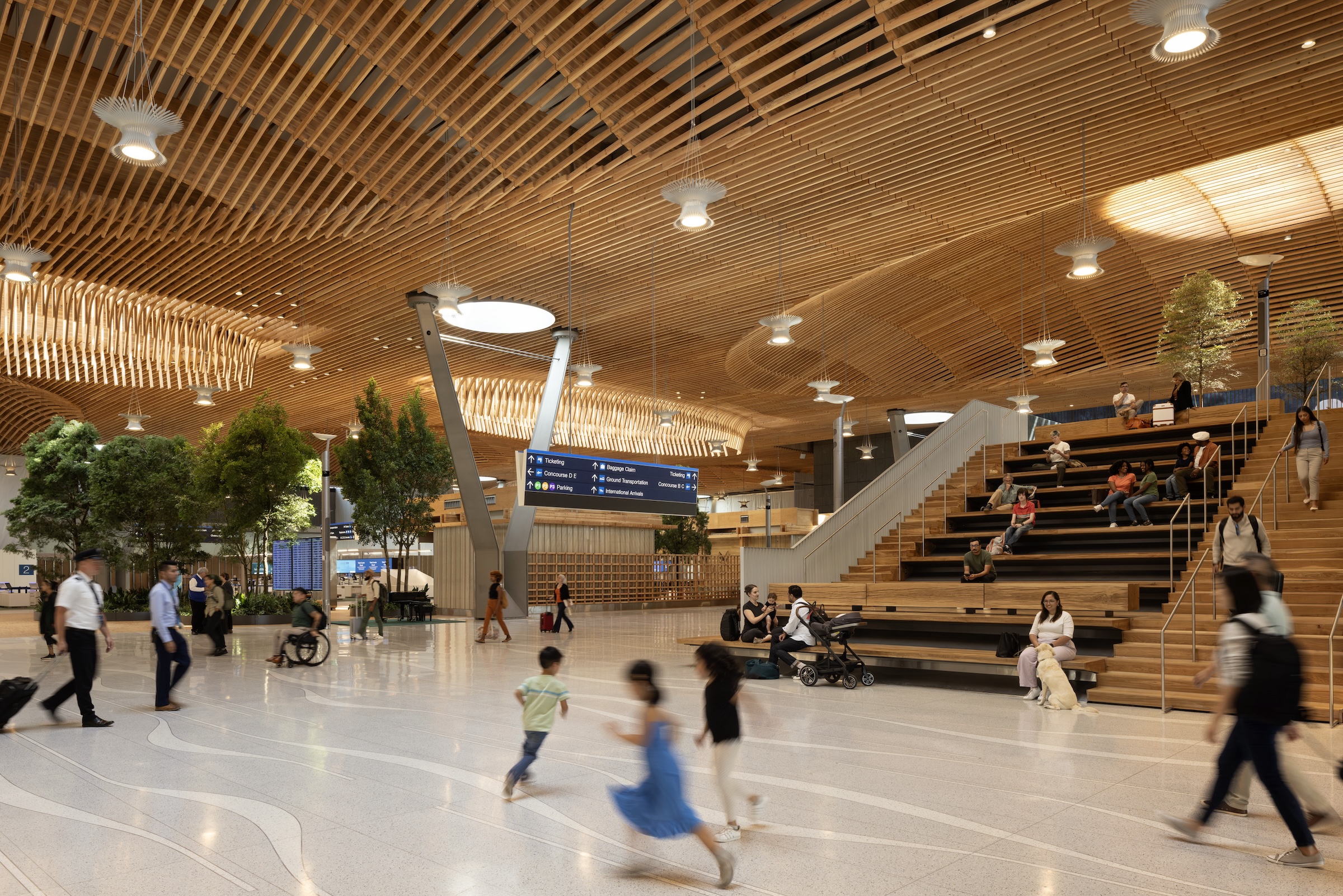
The Port of Portland and ZGF decided to renovate and expand in place instead of building an entirely new terminal. This approach helped achieve schedule and time savings in addition to a 70% reduction in embodied carbon compared to building new. The airport remained fully operational throughout five years of phased construction.
“The design evokes the best of our region yet offers other airports a new model for how to expand and renovate in place to meet the travel demands of the future generations,” Sharron van der Meulen, ZGF managing partner, said in the statement.
While doubling capacity, the main terminal achieves a 50% reduction in energy use per square foot with an all-electric ground-source heat pump. With resilient design strategies, the terminal can withstand a 9.0 magnitude earthquake.
A second project phase, now underway, will finish in early 2026, providing more retail and dining amenities as well as exit lanes on the north and south sides of the terminal.
On the Building Team:
Client: Port of Portland
Architect of record and interior designer: ZGF
Structural engineer: KPFF Consulting Engineers (primary), Arup
MEP engineer: PAE Engineers (primary), Arup
Geotechnical engineer: GRI
Civil engineer and airside planning: HNTB
General contractor: Hoffman Skanska Joint Venture
Pre-construction services: Turner Construction
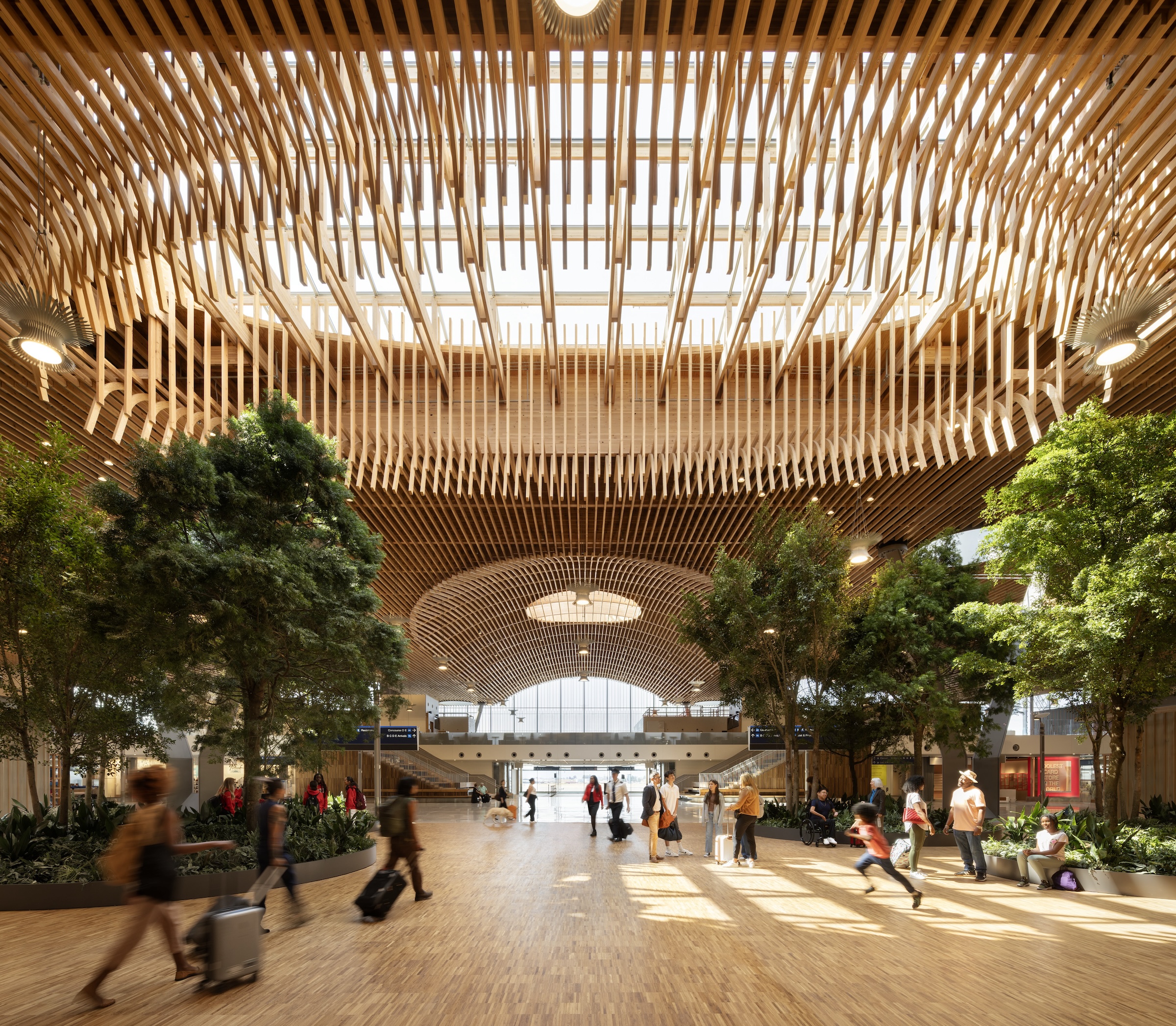
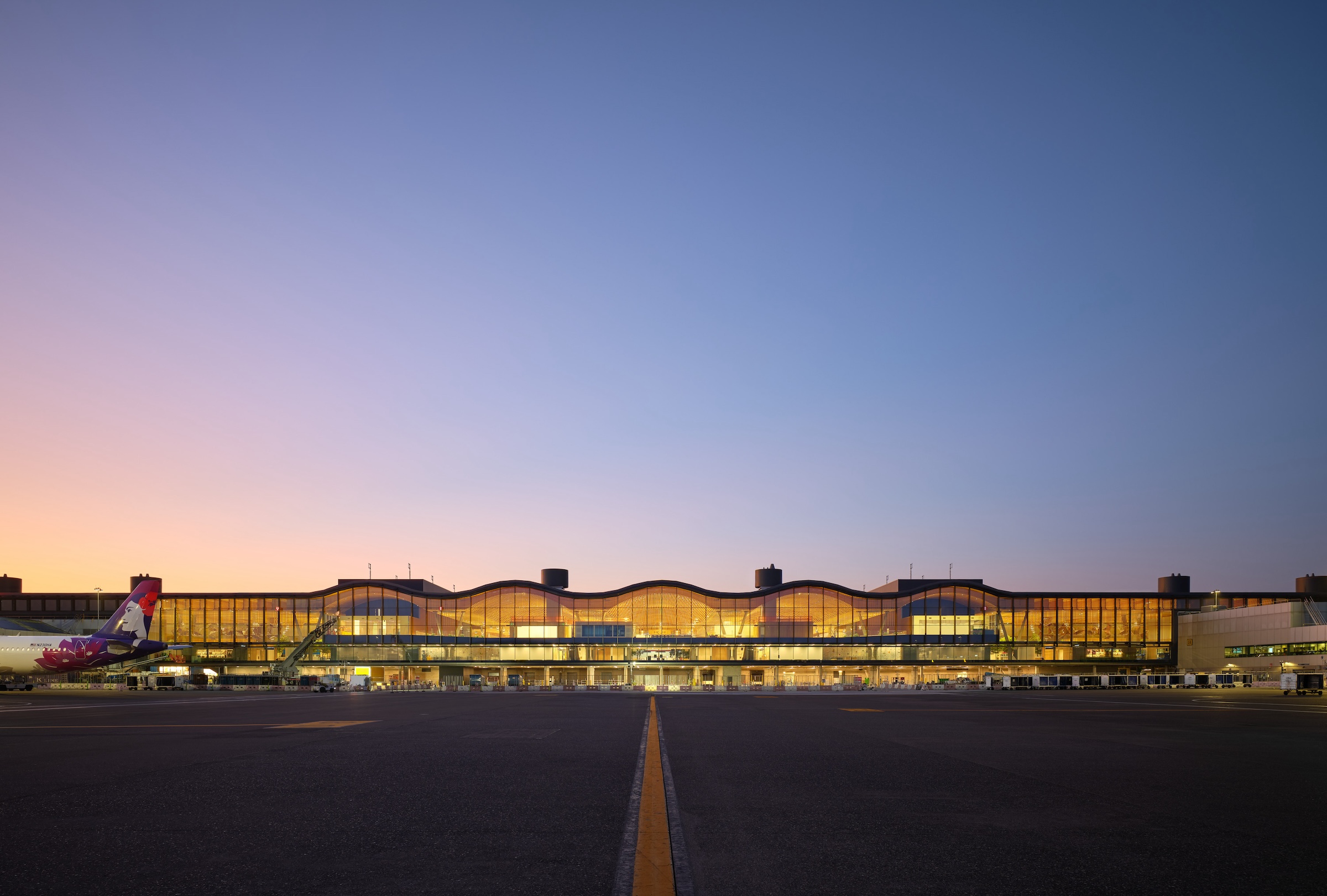
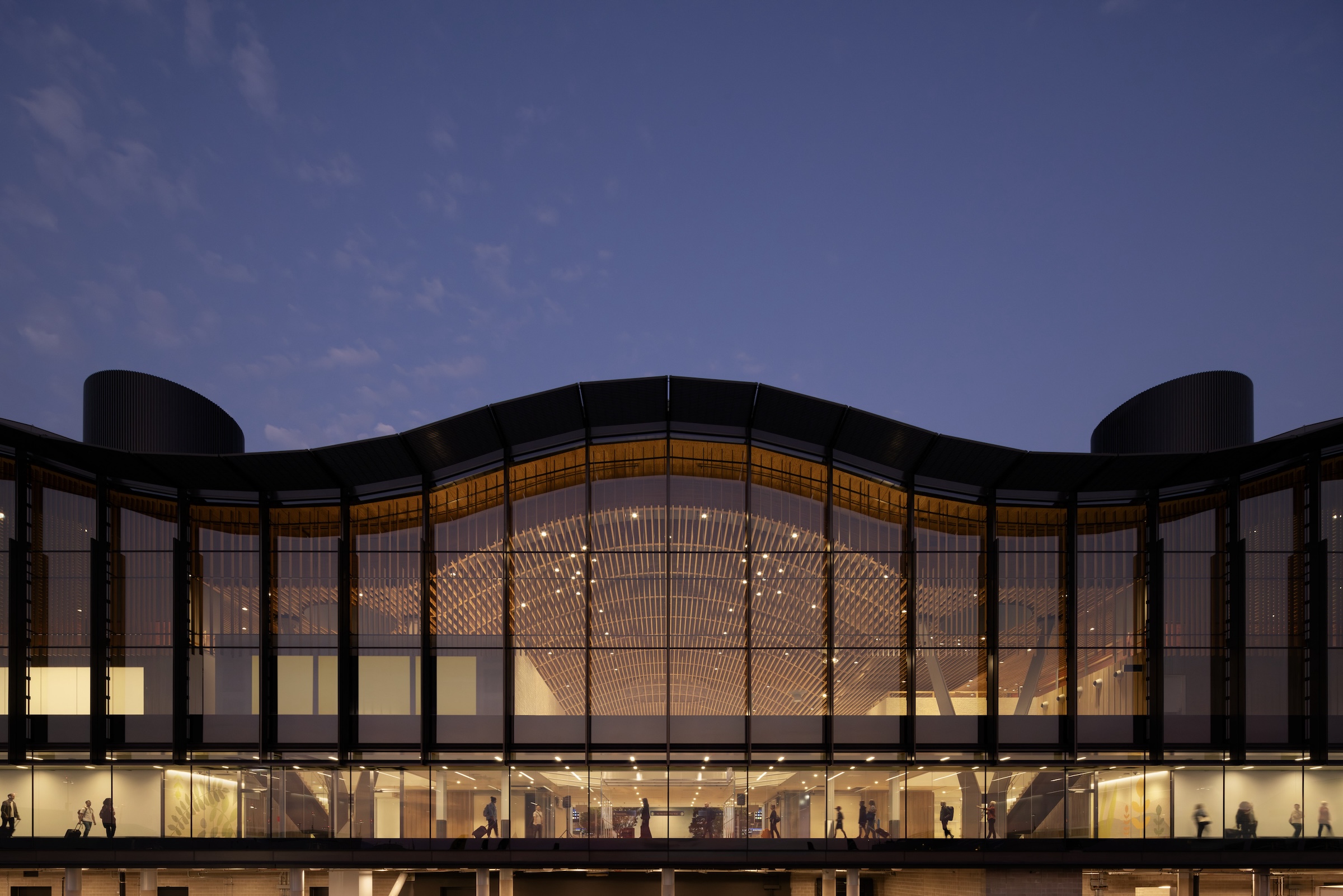
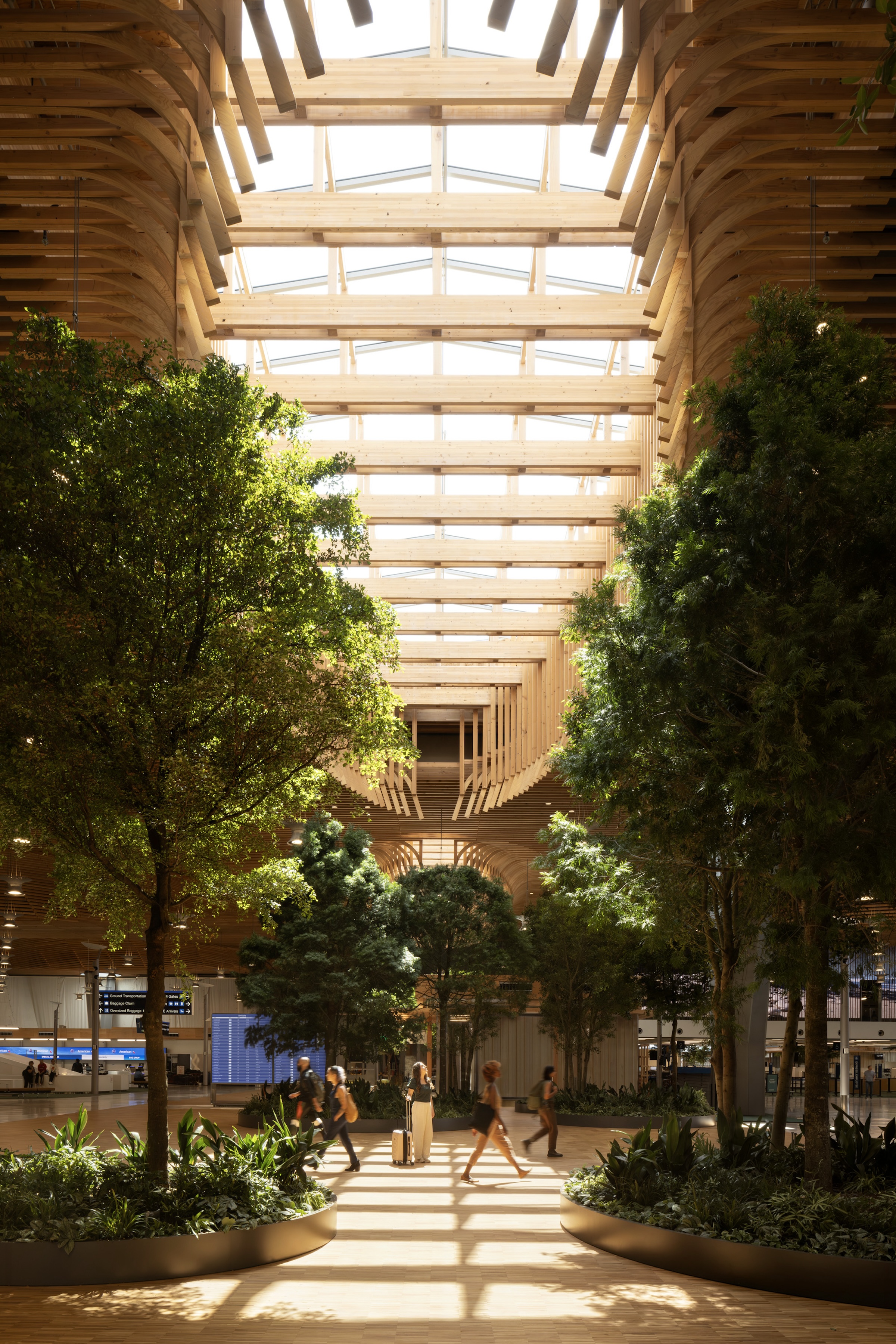

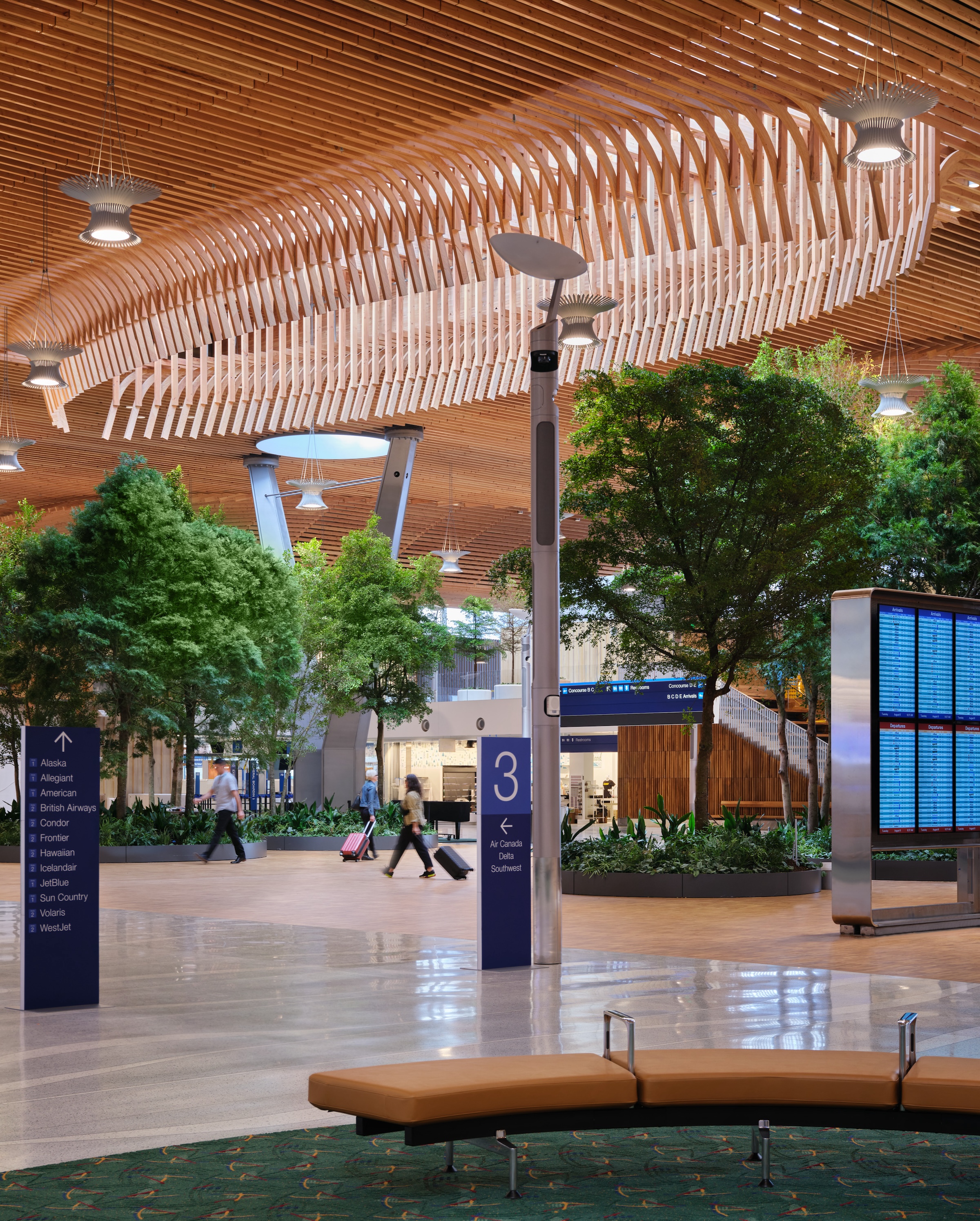

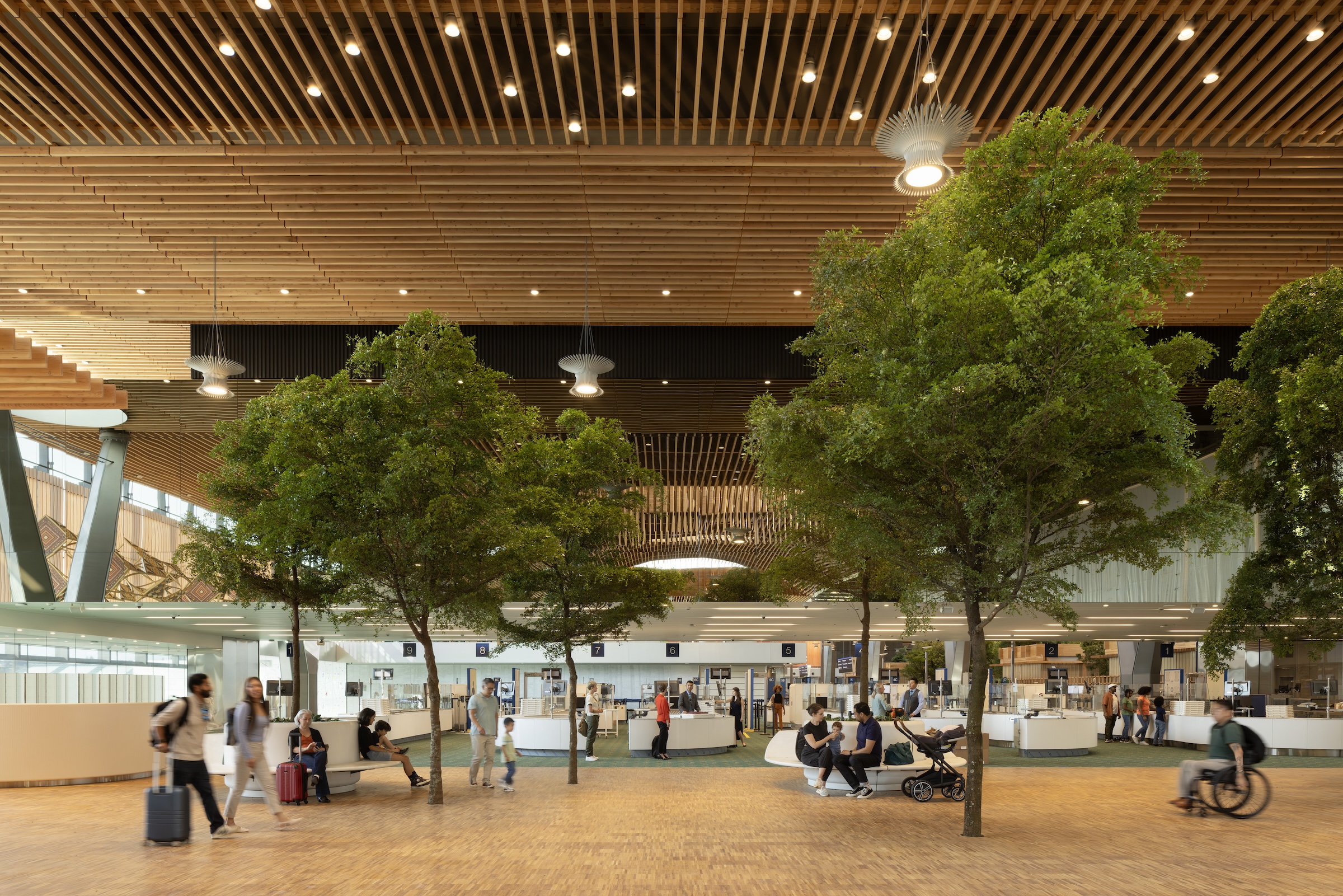
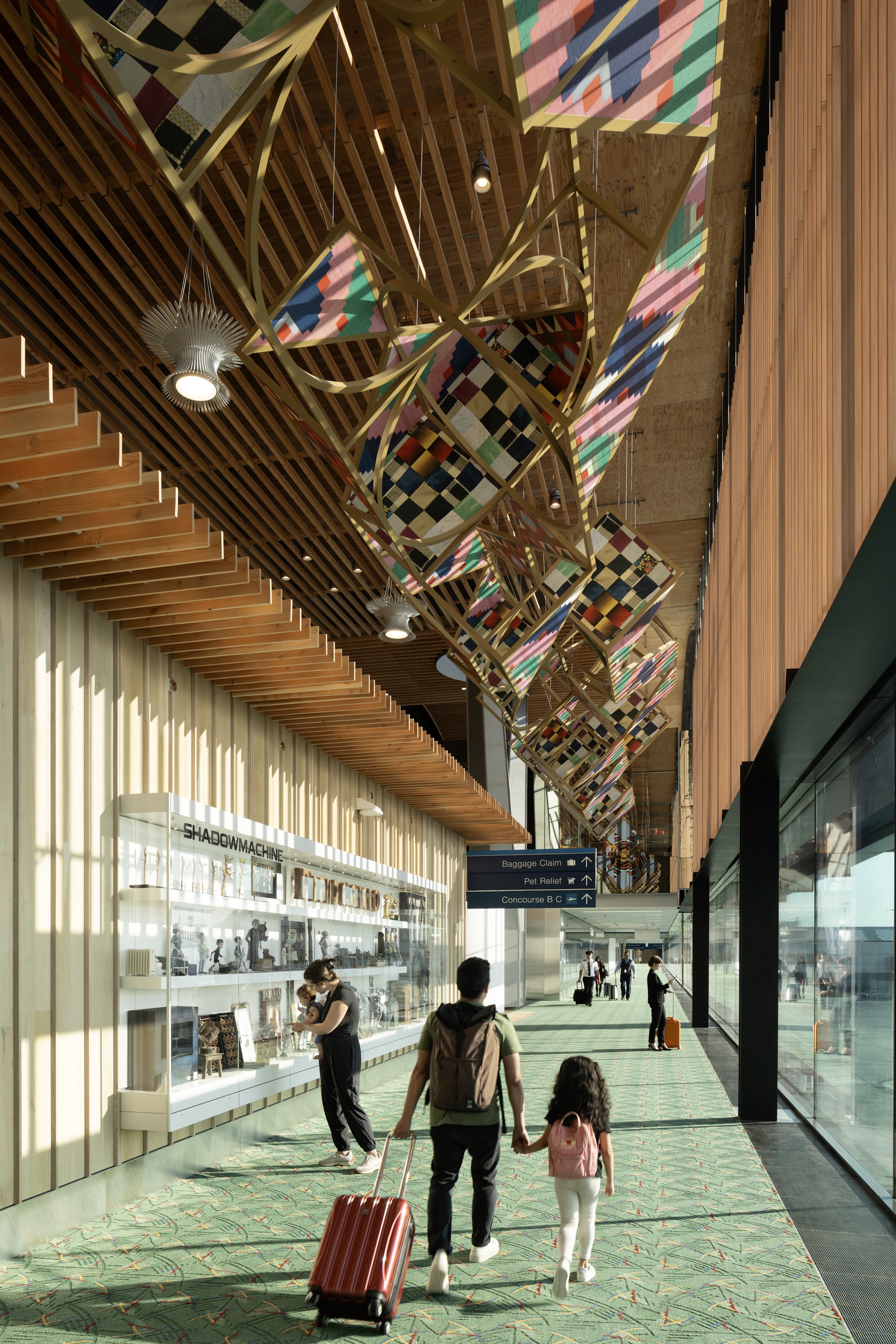
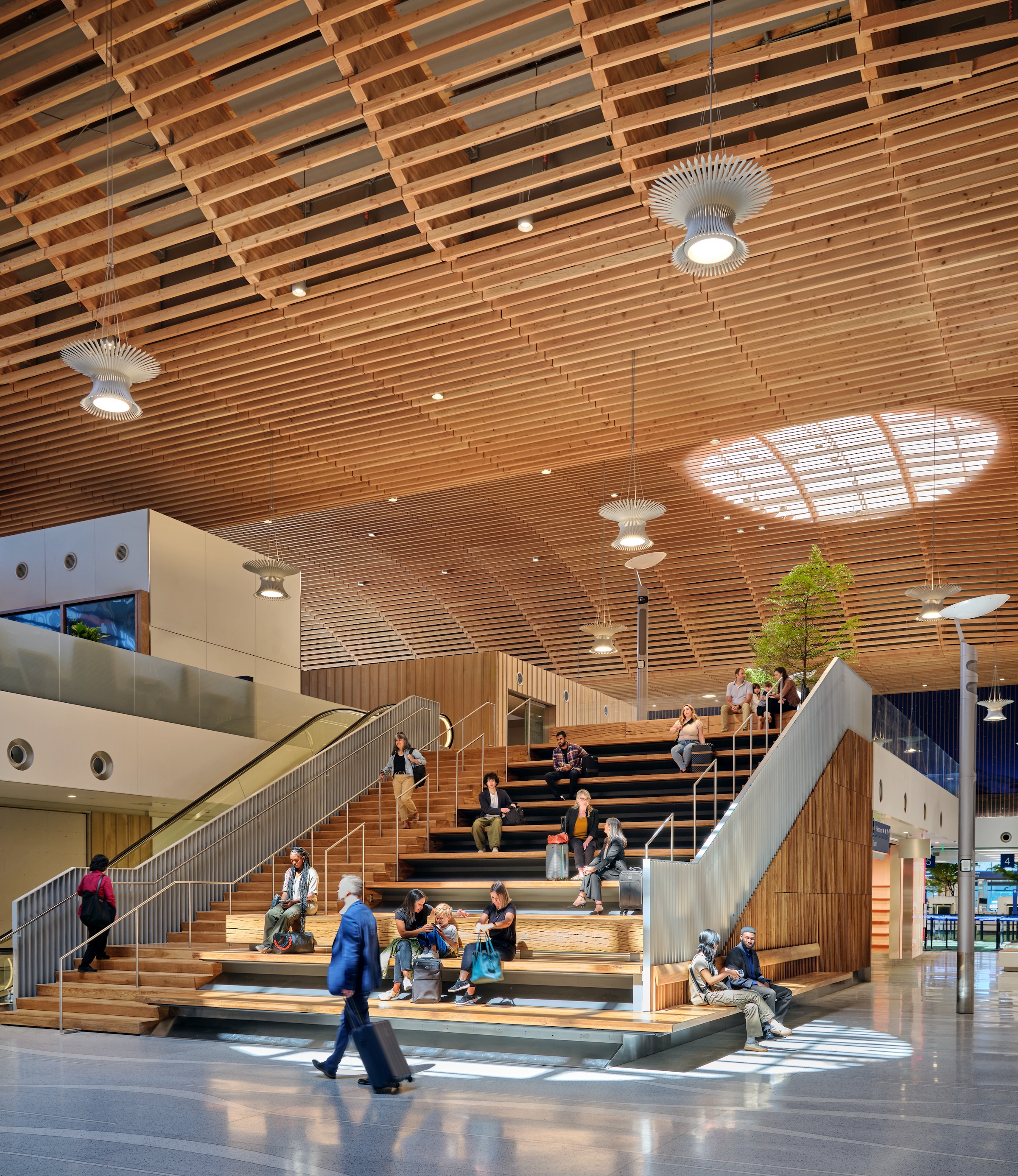

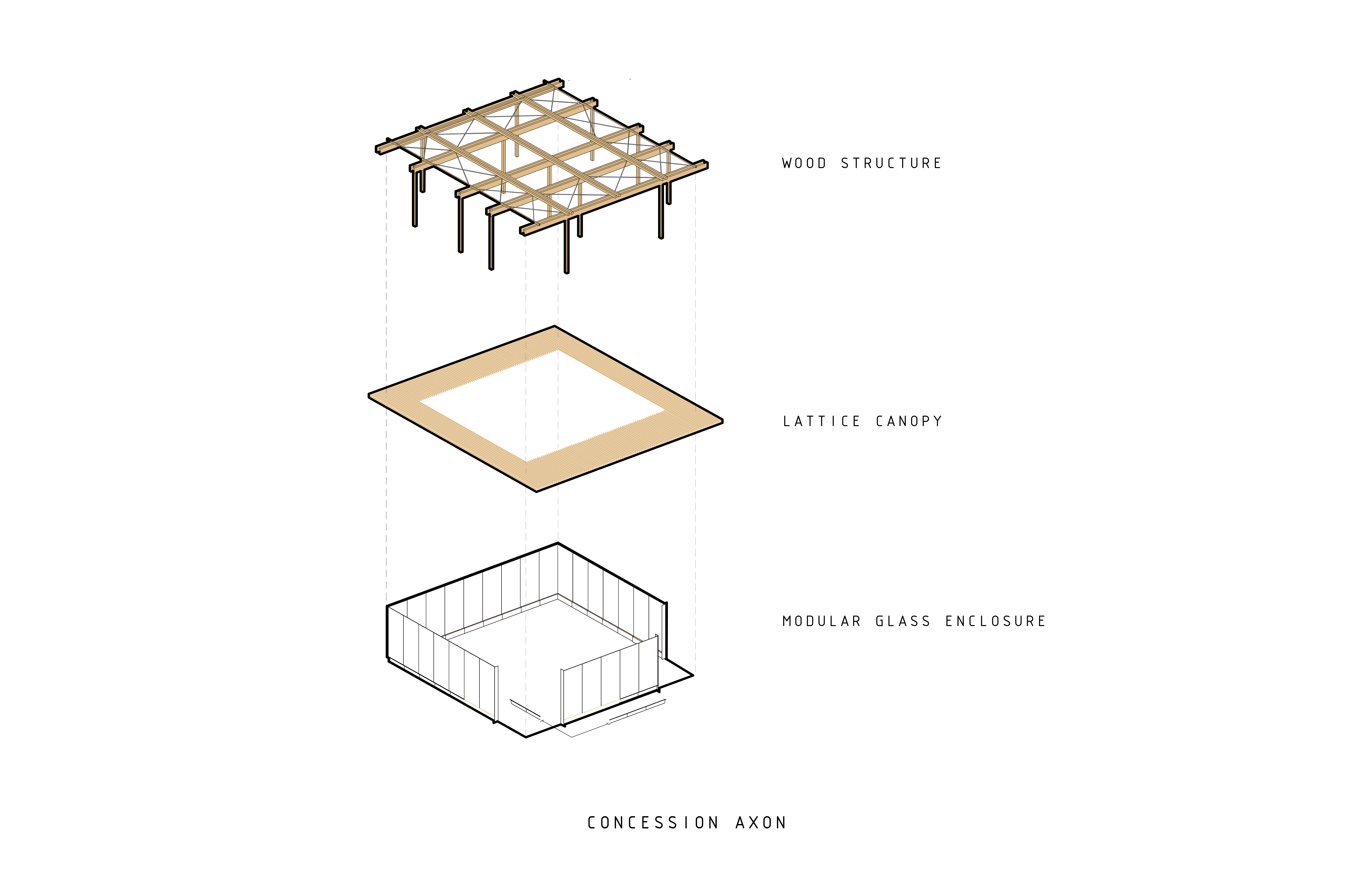
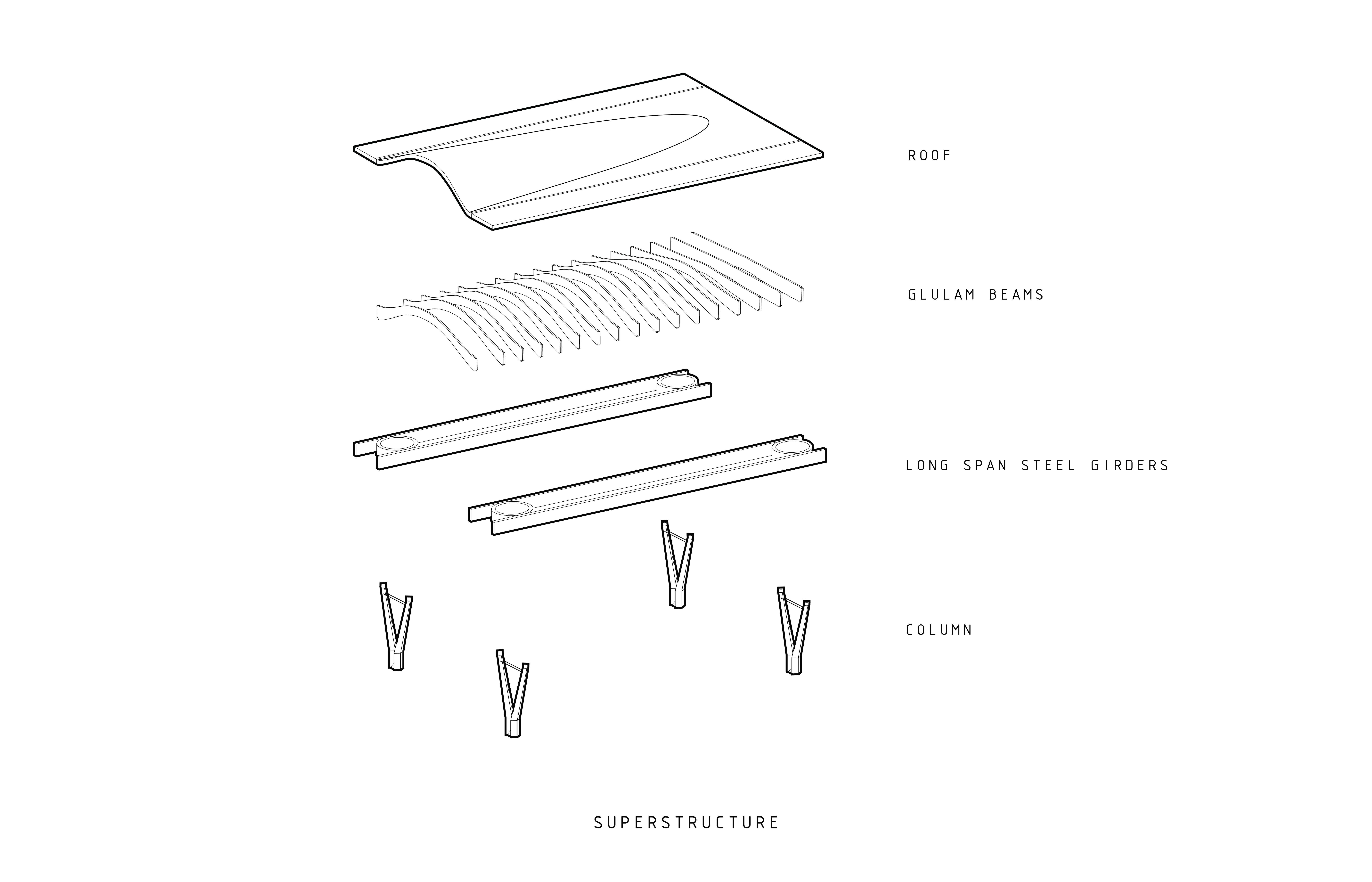

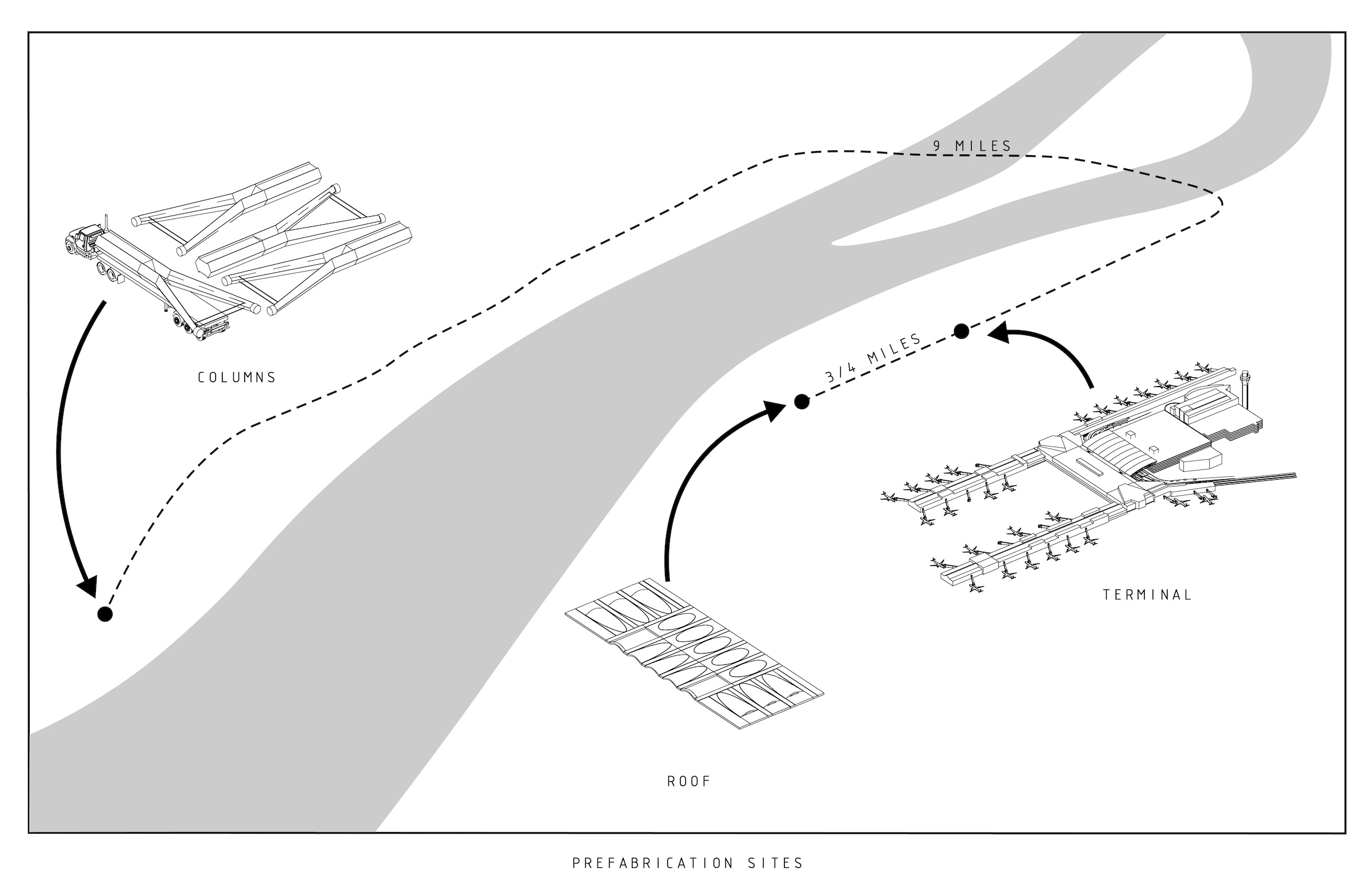
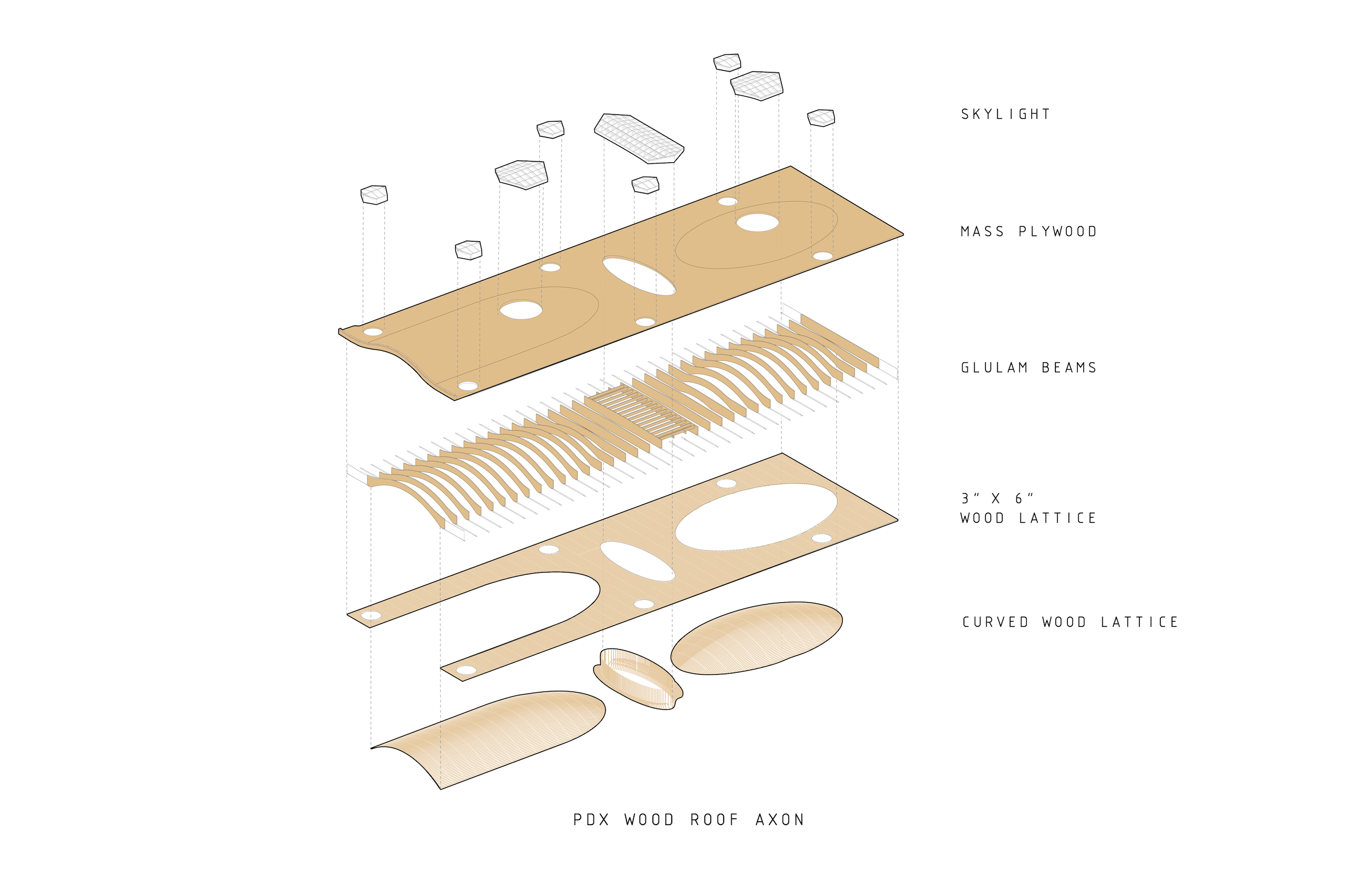
Related Stories
Airports | Aug 13, 2021
Kansas City International Airport’s new terminal breaks ground
SOM designed the project.
Airports | Aug 13, 2021
Kansas City International Airport’s new terminal breaks ground
SOM designed the project.
Airports | Jul 26, 2021
NORR designs the UK’s first satellite launch Space Hub
The project will be located in Sutherland, Scotland.
Wood | Jul 16, 2021
The future of mass timber construction, with Swinerton's Timberlab
In this exclusive for HorizonTV, BD+C's John Caulfield sat down with three Timberlab leaders to discuss the launch of the firm and what factors will lead to greater mass timber demand.
Resiliency | Jun 24, 2021
Oceanographer John Englander talks resiliency and buildings [new on HorizonTV]
New on HorizonTV, oceanographer John Englander discusses his latest book, which warns that, regardless of resilience efforts, sea levels will rise by meters in the coming decades. Adaptation, he says, is the key to future building design and construction.
Airports | Jun 9, 2021
ZGF unveils latest renderings of Portland International Airport’s main terminal
An undulating wooden roof highlights the project.
Airports | May 27, 2021
Grimshaw wins competition to design Shenzhen Airport East Integrated Transport Hub
The competition sought to find a design that created an integrated intermodal transport hub that could act as a new urban gateway.
Digital Twin | May 24, 2021
Digital twin’s value propositions for the built environment, explained
Ernst & Young’s white paper makes its cases for the technology’s myriad benefits.
Multifamily Housing | Mar 28, 2021
Smart home technology 101 for multifamily housing communities
Bulk-services Wi-Fi leads to better connectivity, products, and services to help multifamily developers create greater value for residents–and their own bottom line.
Market Data | Feb 24, 2021
2021 won’t be a growth year for construction spending, says latest JLL forecast
Predicts second-half improvement toward normalization next year.


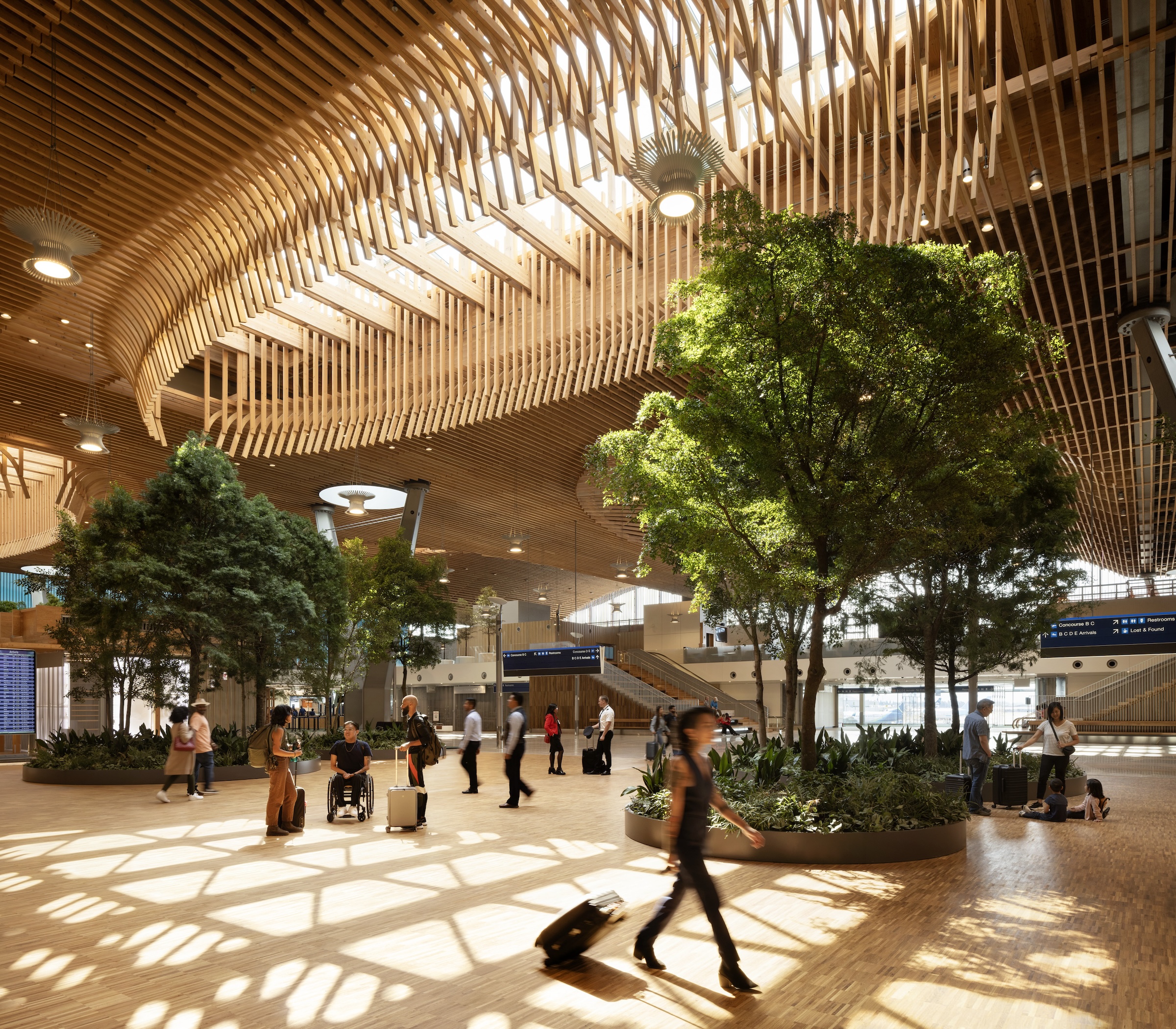




![Oceanographer John Englander talks resiliency and buildings [new on HorizonTV] Oceanographer John Englander talks resiliency and buildings [new on HorizonTV]](/sites/default/files/styles/list_big/public/Oceanographer%20John%20Englander%20Talks%20Resiliency%20and%20Buildings%20YT%20new_0.jpg?itok=enJ1TWJ8)









